Top 11 Enterprise Risk Management Software
It can’t be simply a coincidence that only a few companies are managing their enterprise risk management well. To understand the level of risk to an enterprise, one can take it in the form of an iceberg that remains apparently visible for a considerable time before they actually hit a large ship (in this case the company). However, if it is ignored for too long, no one knows how strong its impact would be because the majority of risk is invisible to the eye and remains deep within the surface of water. Thus, it is very important to take immediate actions whenever there is any sign of enterprise risk.
Read More: Best Financial Risk Management Software For Small Business
Whereas the large ships have developed a series of formidable countermeasures to tackle the menace of icebergs, the modern, big companies are still to develop such foolproof measures against the enterprise risks. Though most of the large companies do have personnel constantly looking out for potential risks, the main problem lingers around somewhere else. Apparently, a typical organization is full of various levels of lookouts, but the problems is not that much in the detection of risk as it is in deciphering the meaning and value of various potential risk situations.
Read More: Top 10 Vendor Risk Management Software
There could be several different types of risks for an organization that may include but not limited to:
- Strategic risks
- Regulatory risks
- Safety risks
- Operational risks
- Insurance risks
- Auditing risks
- Capital risks
As each of these types requires different types of expertise, usually, they are managed under independent silos of enterprise risk management.
Read More: Best Compliance Software For Small Business
But the problem here is a lack of common framework in organizations that can interpret lookout information efficiently. Various risk managers of an organization are rarely required to communicate with each other around a common framework, while working in their respective silos. This situation further gets deteriorated by the absence of data list requires for assessing the extent of the risks. The data list may include some very common things, like:
What information is there to recognize a risk?
- What will be its impact, if it hits?
- Are their any actions through which it can be mitigated or at least avoided?
- What would be the cost of countermeasures?
It is observed that the separate risk silos collect their data separately in different formats of communication and then try to analyze them in separate meetings. This makes it very complicated for the business heads to compile all the data from different silos into one format that can be understood clearly. To add some more confusion to the situation that is already marred with several complications, sometimes same risks are reported by different silos in different formats.
So, the solutions to all these problems lie in the following measures:
Make all the experts of enterprise risk management communicate frequently with one another.
- All types of risks should be made to gather similar data for easier manipulation.
- All the collected data should be available in a single universal framework.
A carefully conceived enterprise risk management is capable to create a single universal framework by using its tools of reporting and collaboration. However, it is very rare to see an organization opting away from the same old approach of working through the spreadsheets.
Top 11 Enterprise Risk Management Software:
CURASOFTWARE
Cura’s Enterprise Risk Management (ERM) software solutions enable organizations to better manage risk and take advantage of opportunities relating to business objectives and goals.

CURASOFTWARE
LOGICMANAGER
Integrated ERM Software LogicManager connects all your enterprise risk management, governance, and compliance activities.
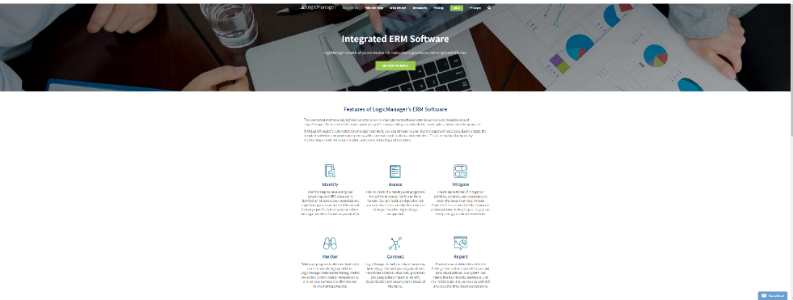
LOGICMANAGER
METRICSTREAM
The MetricStream ERM App enables you to identify, assess, quantify, manage, and monitor your enterprise risks, using one unified system.
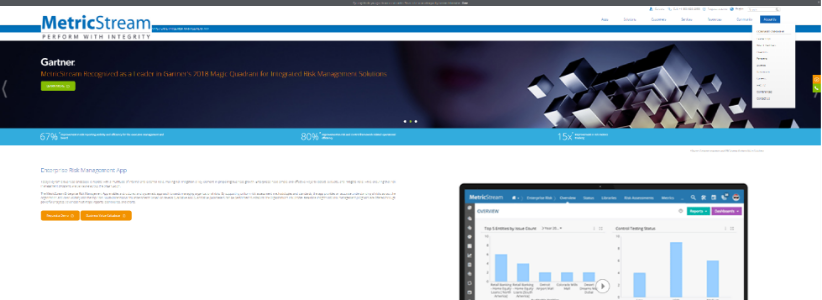
METRICSTREAM
ETQ
Our Enterprise Risk Management(ERM) Software solutions define your risk & standardize a method to solve them. Start effectively mitigating risk and making better decisions with EtQ.
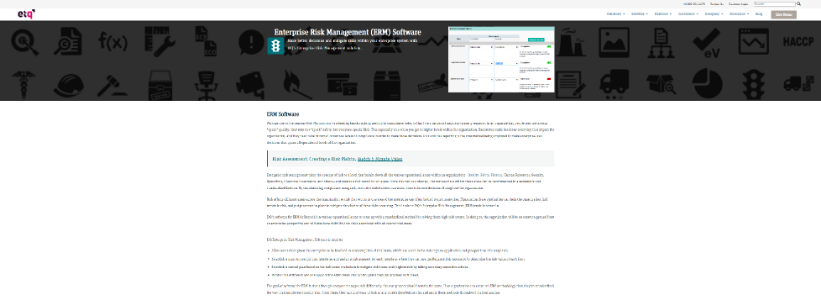
ETQ
RESOLVER
Resolver’s ERM software helps you promote a risk culture through collaboration. Bridge the gap between management levels and departmental silos with a tool that makes it easy to collect, escalate and report on risk data.

RESOLVER
LOGICGATE
LogicGate empowers organizations to create agile Enterprise Risk Management solutions to identify and assess ERM activities across the enterprise.
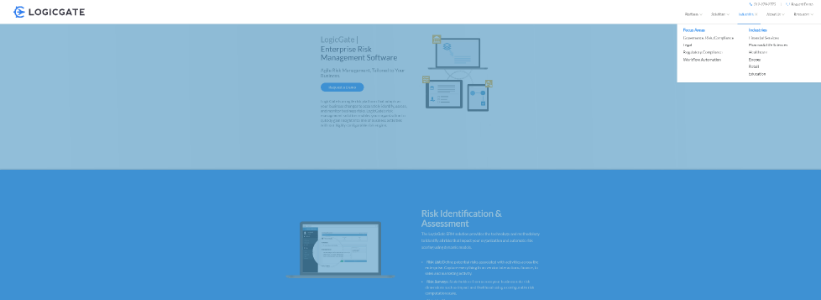
LOGICGATE
PROTECHT
Protecht’s enterprise risk management solutions allows you to take control of your Enterprise Risk management. Visit our website to know more.
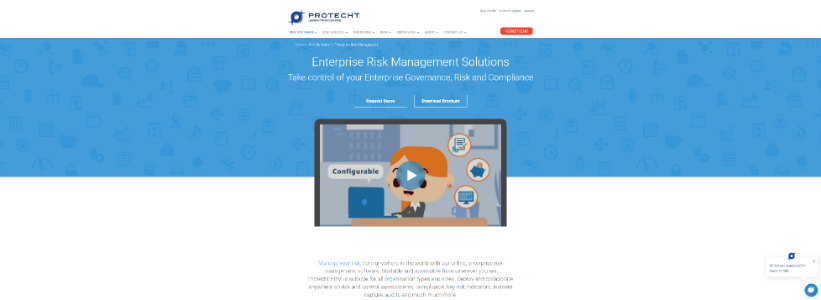
PROTECHT
INTELEX
Intelex Risk Management software empowers you to take control of both existing and potential hazards and risks, integrating risk management into all key organizational processes.
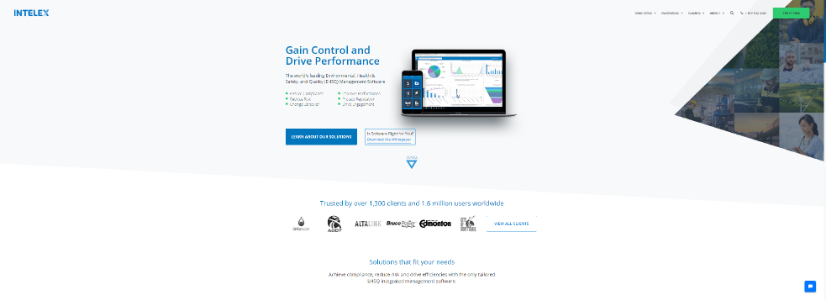
INTELEX
MASTERCONTROL
MasterControl’s enterprise risk management software, MasterControl Risk, is robust and flexible enough to manage all types of risk that can affect the safety and reliability of products and directly impact brand equity.
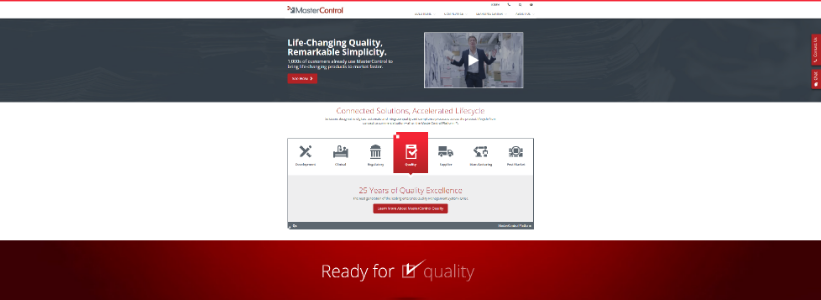
MASTERCONTROL
SAS
No matter how your organization prioritizes risk, SAS has proven methodologies and best practices to help you establish a risk-aware culture, optimize capital and liquidity, and meet regulatory demands. Put on-demand, high-performance risk analytics in the hands of your risk professionals to ensure greater efficiency and transparency. Strike the right balance between short- and long-term strategies. And confidently address changing regulatory requirements.
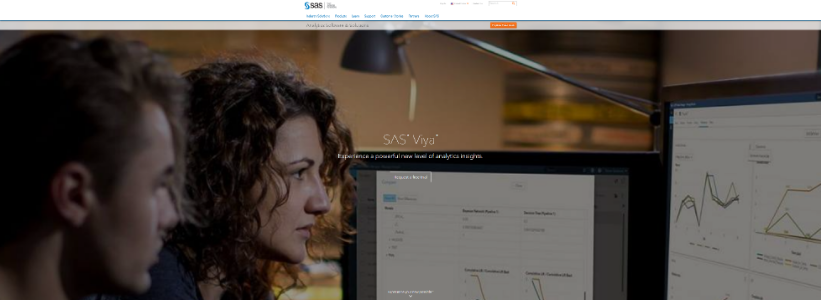
SAS
WORKIVA
Workiva is a leading cloud platform for data collaboration, reporting, and compliance. Discover why over 3,000 organizations use our award-winning solutions to modernize work across the enterprise.
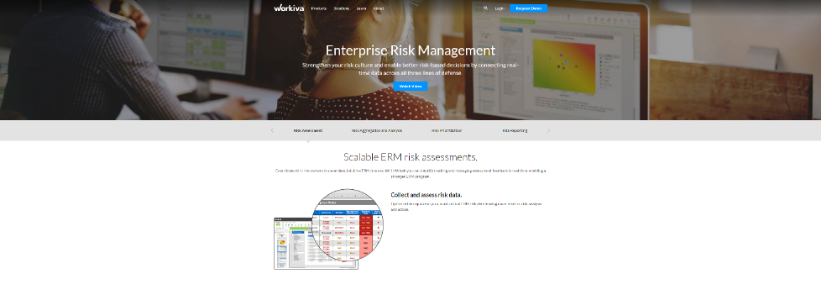
WORKIVA
Basic Compliance and the Risks from Insider Threat
Basic compliance involves conformation to some specific rules, like policy, specification, law and standard, etc. Basic compliance also describes the long-term objectives of corporations and all concerned personnel are required to be aware of them. Because of the ever growing need for accountability and operational transparency, corporations are adopting all the harmonized and consolidated controls for basic compliance.
The cornerstone for the successful compliance operations includes effective management of procedures and policies. However, the varying nature of regulatory environment of basic compliance makes it difficult for all those people who are directly or indirectly involved in taking care of procedures and policies and the associated compliance programs. Compliance officers are required to supervise and organize a lot of data from different groups of the corporation. Besides, they must control the information flow among several internal as well as external stakeholders (e.g. regulatory agencies).
Probably, the biggest security threat faced by compliance officers is the insider threat. Although this threat may not be in the top 10 list of every compliance officer, history has been the witness to several occasions when sensitive data flowed out of corporations premises. Unfortunately, these threats are posed by none other than the most entrusted compliance personnel of organizations. For example: system and database administrators have unaudited and uncontrolled access to most of the sensitive data stored either on desktops or on network files systems.
However, insider threats are not limited to the access of privileged and sensitive data only. In fact, this threat is all about access to any form of intellectual property or data that carries some business value. Insiders who are involved in one or other form of abuse of the access privileges are also called the malicious insiders. Malicious insiders mainly use their laptops or mobile devices (such as: pen drive, compact disc, cell phone, et.) to copy information and this way they commit electronic crimes and break the rules of basic compliance. Now, the copied information is mostly downloaded to personal computers or sent through mail to some interested party.
Read More: Top 6 Best Least Privilege Management Software
Surprisingly, most organizations are yet to take the insider threats seriously. They neither track nor document the insider threats; instead they resort to the same old methods of access control. These conventional access controls can be easily circumvented by the personnel with privilege access.
So what are the solutions there for saving the basic compliance rules from being broken by the malicious insiders? Before moving any further, an organization would have to understand that this insider threat can’t be tackled with technology alone. Organization would have to start by documenting all the potential insider threats first. Then the organization needs to ask some questions to itself, which can be as follow:
- What data is confidential or sensitive for organization and why?
- What could be the level of risk for the organization in case of loss or stealing of sensitive data?
- Which personnel have limited to privileged access to what data, where the access could be to create, update, read or manage the data?
- Which are the methods of access to data and from where, e.g. laptops in home?
- What are the loopholes in the compliance rules that need to be sorted out?
- What are the measures that could be relied on in case of a security threat, like mitigation or elimination of threat?
Once the organization finds the answers to all of these questions and starts working accordingly, there would be no need to worry much about the breaking of basic compliance rules.
Personal contact info – slikgepotenuz@gmail.com
Permanent Address :- Montville, NJ
CEO and co-founder at Cloudsmallbusinessservice.com